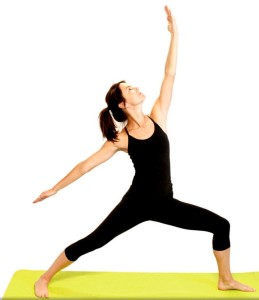A BEGINNERS GUIDE TO DIFFERENT YOGA FORMS
A BEGINNERS GUIDE TO DIFFERENT YOGA FORMS
By AMY BISAZZA
Yoga has developed and evolved over thousands of years to help support a healthy, happy and spiritually aware inner and outer life. All forms of Yoga work on the stimulation and regulations of the energy within the human body. Many popular Yoga forms are based on the physical practice of the asana: postures or body positions.
The wonderful thing about having so many choices is that there is something for everyone, and people may tend to radiate towards the style of Yoga that complements their temperament or personality.
As a complete beginner, knowing the definitions of each type of Yoga can help in making the first class not so daunting, and it is always a good to know roughly what you are getting yourself into!

Ashtanga Yoga (or Vinyasa)
Ashtanga Yoga is one of the most popular forms of Yoga.It’s a very dynamic, purifying and powerful practice using a progressive series of postures which get increasingly more challenging. The importance on synchronizing the breath with the movements is emphasised. The practice can be very demanding, creating a great heat in the body and causing a purification of the body through sweating. If a high energy Yoga is required then this would be suitable, especially for those who sit at desks all day – this can be quite a work out! Yet if the body is recovering from injury, or seeks a slower more relaxing practice this might not be the right style of Yoga. Ashtanga Yoga develops strength and stamina, focus and concentration and elasticity in the body.
Iyengar Yoga
This form of Yoga uses the same postures as Ashtanga Yoga, yet they are done with more attention on the alignment and the postures are held for much longer. The use of props, such as bolsters, belts, blocks and chairs are used to obtain the correct alignment, and to assist those with injuries. This very precise practice offers many benefits for the practitioner. Firstly, there is less chance of injury due to the props supporting the body; the practice is tailored to meet the needs of each individual, rather than the individual fitting into the practice. The practice suits beginners and all levels. Greater respect and understanding of the physical body are developed, and qualities of patience and precision are cultivated.
Bikram Yoga
This form of Yoga is taught in a heated room, which help the release of toxins in the body. There are 26 postures in the sequence, which all work on strengthening and toning the body.
Hatha Yoga
All forms of Yoga are essentially Hatha Yoga, and they have all developed out of this physical asana practice. Hatha Yoga involves holding the postures for certain amount of time with the breath. It can be just as physically demanding as Ashtanga, if not more, as the postures are held for longer. Good balance between strength and flexibility is established in this style of Yoga.
Kundalini
In this style of Yoga, a set of exercises known as a Kriya is practiced, which includes movement (asana), mantra (chanting), breathing and meditation. It can be a very powerful practice, emotionally, energetically and spiritually, and works on waking the energy up that lives in the spine. This practice increases flexibility in spine, lung capacity and strength in the core.
Restorative Yoga
This style of Yoga has evolved from Iyengar Yoga, but it focuses on deep relaxation and healing, and therefore postures are held for long periods of time, from five to thirty minutes. Props are used to maintain maximum comfort and release, and gentle breathing exercises are introduced during and between postures. Restorative Yoga can be beneficial to those recovering from injury, pregnant women, stress-related disorders or anyone wishing to slow down.

About the Author:
Amy Bisazza is the resident yoga expert at SportsShoes.com. She’s been practising yoga for over 14 years and teaching for six years. Amy is a British Wheel of Yoga accredited teacher and trained as a Hatha Yoga teacher with the Yoga Academy in 2007.
